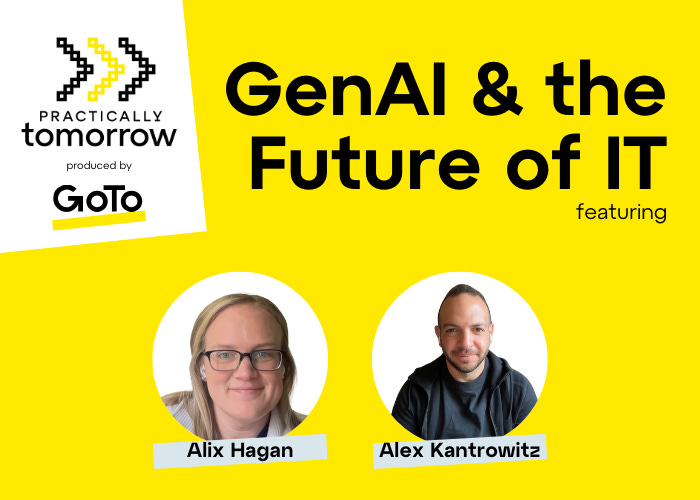Klarna CEO: We’re Giving AI More Customer Service Work, Not Less
Headlines announcing Klarna’s AI pullback were wrong, its CEO says. Instead of retreating, it’s handing more tasks to the bots.
Over the past week, a slew of headlines claimed Klarna’s aggressive push to automate customer service with generative AI had failed. The Swedish fintech company last year said it automated the equivalent of 700 customer service jobs with AI. And after it announced a new plan to hire human agents, the conventional wisdom was that the project wasn’t working.
Klarna’s AI push has been the loudest, if not the boldest, attempt to use generative AI in place of human workers, so a rollback would be a damning commentary on the technology’s usefulness in the workplace. But according to Klarna CEO Sebastian Siemiatkowski, the headlines were wrong and the initiative is accelerating.
“Our agent, that we launched about a year ago, is still dealing with about 1.3 million errands per month,” Siemiatkowski told me, “which is the equivalent of what previously was done by about 800 people on a monthly basis.”
Klarna is hiring humans to deal with higher-end conversations that it previously outsourced, but at the same time it’s accelerating its AI push. When Klarna launched its AI pilot, for instance, its bot couldn’t tell people why they were being rejected from certain services. Now it can. As such, Klarna tells me the bot currently handles the work equivalent to an additional 100 human customer service agents over last year, covers two-thirds of customer service chats, has the same average customer satisfaction score as human agents, fields 25% fewer repeat inquiries, and resolves customer chats in an average of two minutes vs. eleven minutes with human agents.
“The quality and the ability of it to deal with more complex errands has increased,” Siemiatkowski said. “So it's kind of eating up into level-two support.”
Siemiatkowski has said he wanted Klarna to be OpenAI’s “favorite guinea pig,” and its AI customer service initiative is following a path many might take in the future. The company’s bot can resolve simple questions, like whether a customer successfully made a payment, pretty quickly. This saves customers the time they’d otherwise spend waiting for a human handling several chats at once. For more complex problems, a human agent can be a better option, and even a competitive advantage, so Klarna is attempting to balance its outsourced customer service with people who better understand the company for those conversations, Siemiatkowski said.
Klarna has been one of generative AI’s loudest cheerleaders, so it’s reasonable that its decision to hire human agents could be seen as a retreat at first glance. Siemiatkowski, for instance, has said “I am of the opinion that A.I. can already do all of the jobs that we, as humans, do.” And he’s said that AI has helped reduce the company’s workforce by 40%, from 5,527 to 3,422 employees between December 2022 and December 2024.
In our conversation, Siemiatkowski did admit he might’ve gotten a bit ahead of the reality, but said the program was still proceeding as planned. “You could definitely place me in the Elon Musk box of saying everything's gonna happen in three months, when it probably will take three years,” he said. But the number of human-equivalent jobs AI will do at Klarna “will continue to go up.” That doesn’t mean the end of jobs for humans at Klarna, but the two forms of agents can exist together. And, if all goes according to Siemiatkowski’s plan, make Klarna stronger than before the program began.
Catch Alex Kantrowitz on the Practically Tomorrow podcast (sponsor)
Alex joins Alix Hagan, from GoTo, to discuss the current state of generative AI—covering key players OpenAI, Anthropic, and Google DeepMind—and where the market is headed. Alix shares her take on how artificial intelligence is influencing IT, the value it offers SMBs, the practical ways to implement AI, and the pitfalls to avoid.
Generative AI In Practice: Prompting Custom Workouts Leads To Higher Workout Completion Rates and Longer Subscriptions
By
Generative AI is promising, but it’s still hard to implement. According to a new survey by IBM, only 25% of AI initiatives delivered on their expected ROI and only 16% scaled company-wide.
So at Big Technology, we’re starting a new occasional series looking at AI projects that are delivering, what problems they solve, and the results (with real numbers).
This week we start with Echelon Fit, a fitness platform that connects people with online classes and trainers. The company started testing its generative model, Echelon AI, late last year and early data indicates that people who use it to personalize their experience work out more and keep their subscriptions longer.
Let’s look at the problem Echelon tackled, the AI solution, and the results:
The problem:



